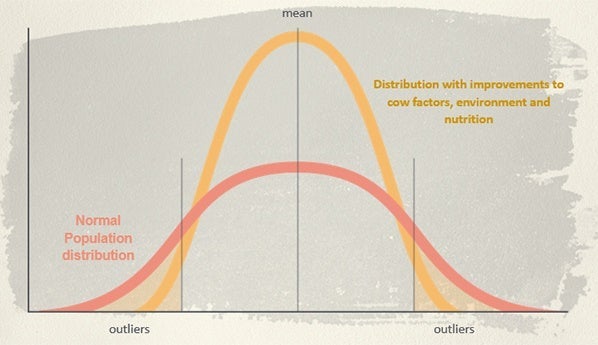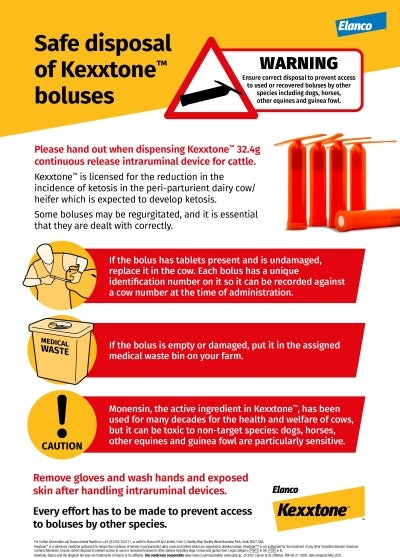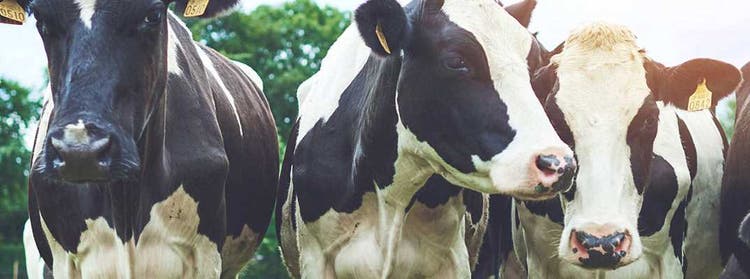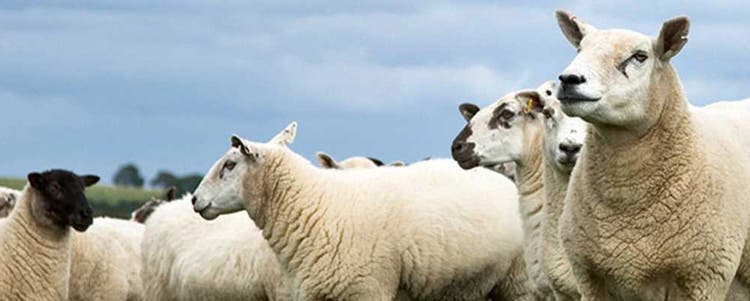Understanding Ketosis
Approximately 75% of disease in dairy cows typically happens in the first month after calving1, with around half of dairy cows experiencing some sort of disease during the transition period2,3. Therefore improving transition management and minimising the effect of immune suppression, hypocalcemia and negative energy balance provides a large opportunity to decrease disease and increase the welfare and productivity of the herd.

Negative energy balance occurs around calving due to the gap formed by reduced intake in feed at a time when demand for energy for late foetal growth and milk production rapidly increases. When this becomes excessive, e.g. where an animal has more marked decrease in intake due to lameness, sickness, being over conditioned, twin bearing, inadequate water or feed access, constant social disruption, etc. they are at risk of getting ketosis, ketones building up in blood, milk and urine. This is as a result of breaking down their body fat to fill this widened energy gap. In excess these ketones have negative consequences with respect to fertility, health and production.
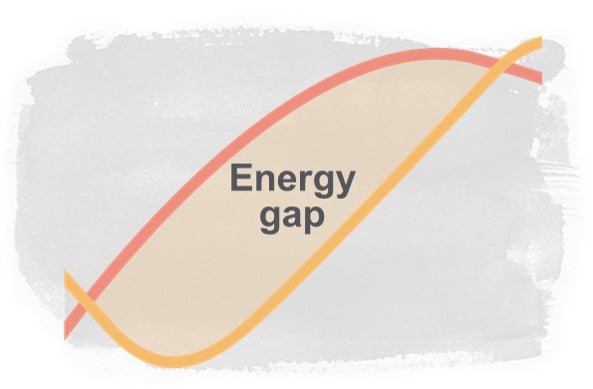
Consequences of Ketosis
When thinking of ketosis often what springs to mind are the pear drop smell, milk drop, suppressed appetite and poor rumen fill. However, these are indicators of clinical ketosis and are the tip of the iceberg. There will be many other cows with high ketone levels which will affect their health and performance and show no clinical signs – this is known as hidden or subclinical ketosis.
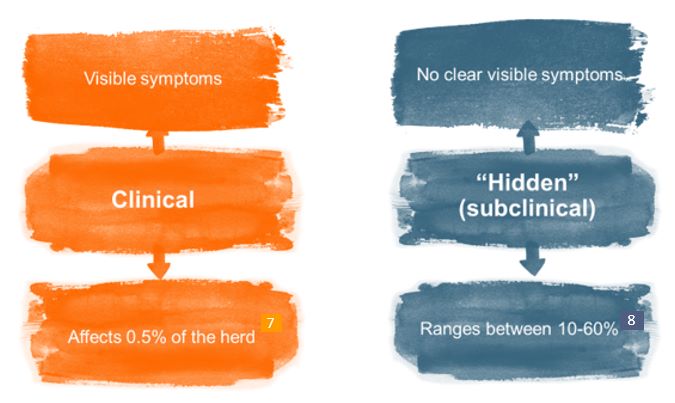
Hidden ketosis has negative consequences on the health, fertility and production of cows:
Nutritionist, Hefin Richards of Rumenation Nutrition Consultancy, has described hidden ketosis as “like driving with the handbrake on. Everything else you do will have limited return, as cows will not be able to reach their potential.”
A recent study 23of over 1,100 spring calving cows in grazing dairy herds in Ireland indicated that the prevalence of subclinical ketosis in a herd is similar whether the herd is housed or grazing.
What could ketosis be costing?
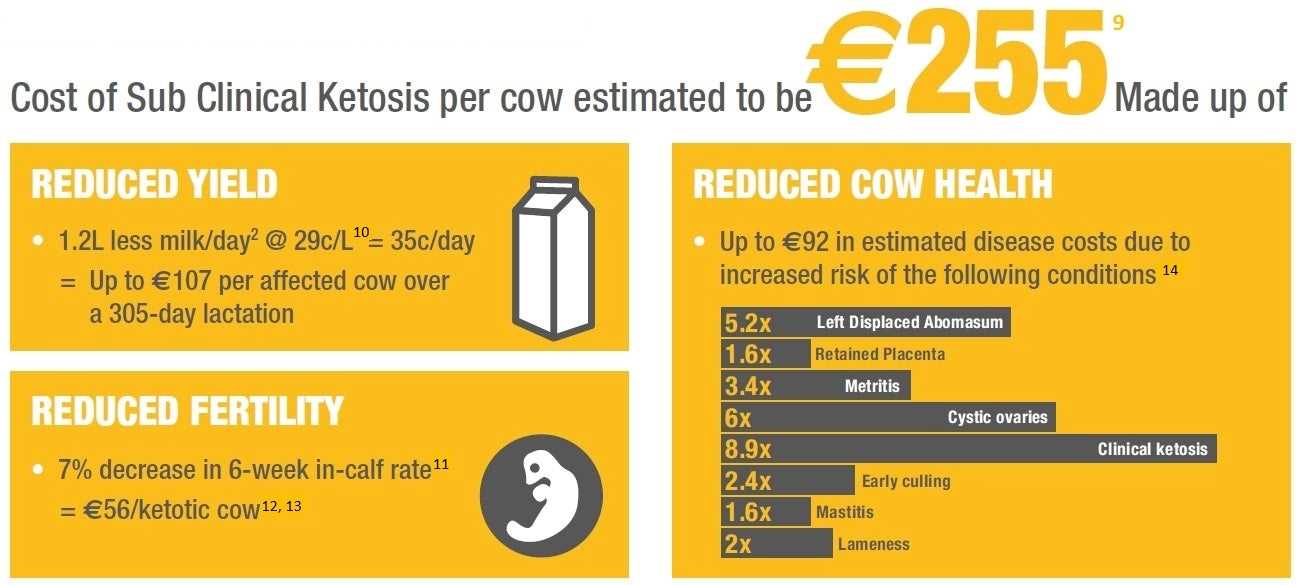
Download the Irish grazing study summary23
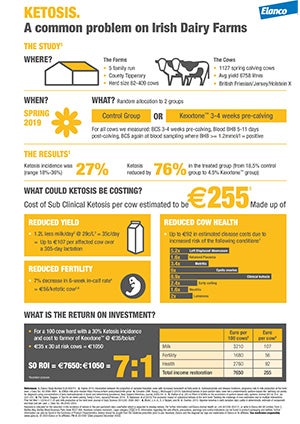
Identifying Cows At Risk of Ketosis
Multiple factors can contribute to problems in transition cows, and many of the important precipitating factors start prior to calving, ie. in the dry cows. Identify and treat at-risk cows to prevent the onset of ketosis.
About Kexxtone™
Kexxtone™ is a prescription only medicine (POM) and must be prescribed by your vet.
Kexxtone™ is an intraruminal bolus containing monensin, that is licensed for the reduction in the incidence of ketosis in the peri-parturient dairy cow / heifer expected to develop ketosis. It is part of a wider Elanco programme for transition management, aimed at improving the health and well-being of transition cows. It is administered 3-4 weeks pre-calving, and lasts for 95 days so covers the main risk period.
More Materials
- Walsh R.B., Walton J. S. et al. The effect of subclinical ketosis in early lactation on reproductive performance of postpartum dairy cows J. Dairy Sci. 2007;90: 2788-2796.
- Ospina P. A., Nydam D.V. et al. Association between the proportion of sampled transition cows with increased nonesterified fatty acids and β-hydroxybutyrate and disease incidence, pregnancy rate, and milk production at the herd level Journal of Dairy Science 2010;93: 3595-3601.
- How Metabolic Diseases Impact the Use of Antimicrobials:A Formal Demonstration in the Field of Veterinary Medicine Didier Raboisson1*, Maxime Barbier1, Elise MaigneÂ2 PLOS ONE | DOI:10.1371/journal.pone.0164200 October 7, 2016.
- LeBlanc, S., 2010. Monitoring metabolic health of dairy cattle in the transition period. Journal of Reproduction and Development 56 (Suppl), S29–S35.
- Santos et al, Proc. 2013 Dairy Cattle Reproduction Council Conference, Indianapolis, IN, p 32-48.
- Major Advances in Disease Prevention in Dairy Cattle, S J LeBlanc, K D Lissemore, D F Kelton, T F Duffield, K E Leslie. American Dairy Science Association 2006.
- Macrae, A.I. et al. Prevalence of clinical and subclinical ketosis in UK dairy herds 2006-2011. World Buiatrics, Lisbon, Portgual, 2012.
- Elanco Farm Audit 2011, No. GN4FR110006. Data on file.
- McArt, J. A. A., D. V. Nydam, and M. W. Overton. 2015. Hyperke-tonemia in early lactation dairy cattle: A deterministic estimate of component and total cost per case. J. Dairy Sci. 98:2043–2054.
- ICMSA milk price tracker https://icmsa.ie/farm-policy/dairy/milk-price/
- Compton CWR, Young L, McDougall S (2015) Subclinical ketosis in post-partum dairy cows fed a predominantly pasture-based diet: defining cut-points for diagnosis using concentrations of beta-hydroxybutyrate in blood and determining prevalence, New Zealand Veterinary Journal, 63(5):241-8.
- Shalloo et al, (2014) Effect of fertility on the economics of pasture-based dairy systems, Animal (2014), 8:s1, 222–231.
- Pat Clarke, Teagasc, 6 Tips for six-week calving, Today’s Farm, January/February 2016.
- Raboisson et al., 2015. The economic impact of subclinical ketosis at the farm level: Tackling the challenge of over-estimation due to multiple interactions. Preventive Veterinary Medicine 122 (2015) 417–425.
- Roche et al. 2009. Invited review: Body condition score and its association with dairy cow productivity, health, and welfare. J. Dairy Sci. 92:5769-5801.
- Huzzey, J. M., et al. (2007). Prepartum behavior and dry matter intake identify dairy cows at risk for metritis. J. Dairy Sci. 90(7): 3220-3233.
- Heringstad, Chang, Gianola, Klemetsdal 2005. Genetic analysis of clinical mastitis, milk fever, ketosis and retained placenta in three lactations of Norwegian Red cows. J. Dairy Sci. 88:3273-3281.
- Rajala-Schultz, Grahn, McCulloch 1999. Effect of milk fever, ketosis and lameness on milk yield of dairy cows. J. Dairy Sci. 82:288-294.
- Gillund, Reksen, Grahn, Karlberg 2001. Body condition related to ketosis and reproductive performance in Norwegian dairy cows. J. Dairy Sci. 84:1390-1396.
- Duffield 2000. Subclinical ketosis in lactating dairy cattle. Vet. Clin. North Am. Food Anim. Pract. 16:231-253.
- Fricke 2001. Review: Twinning in Dairy Cattle. Prof. Anim. Sci. 17:61-67.
- Elanco Elanco clinical trial AA9CEU0801
- Elanco Study Number ELA1800751.


